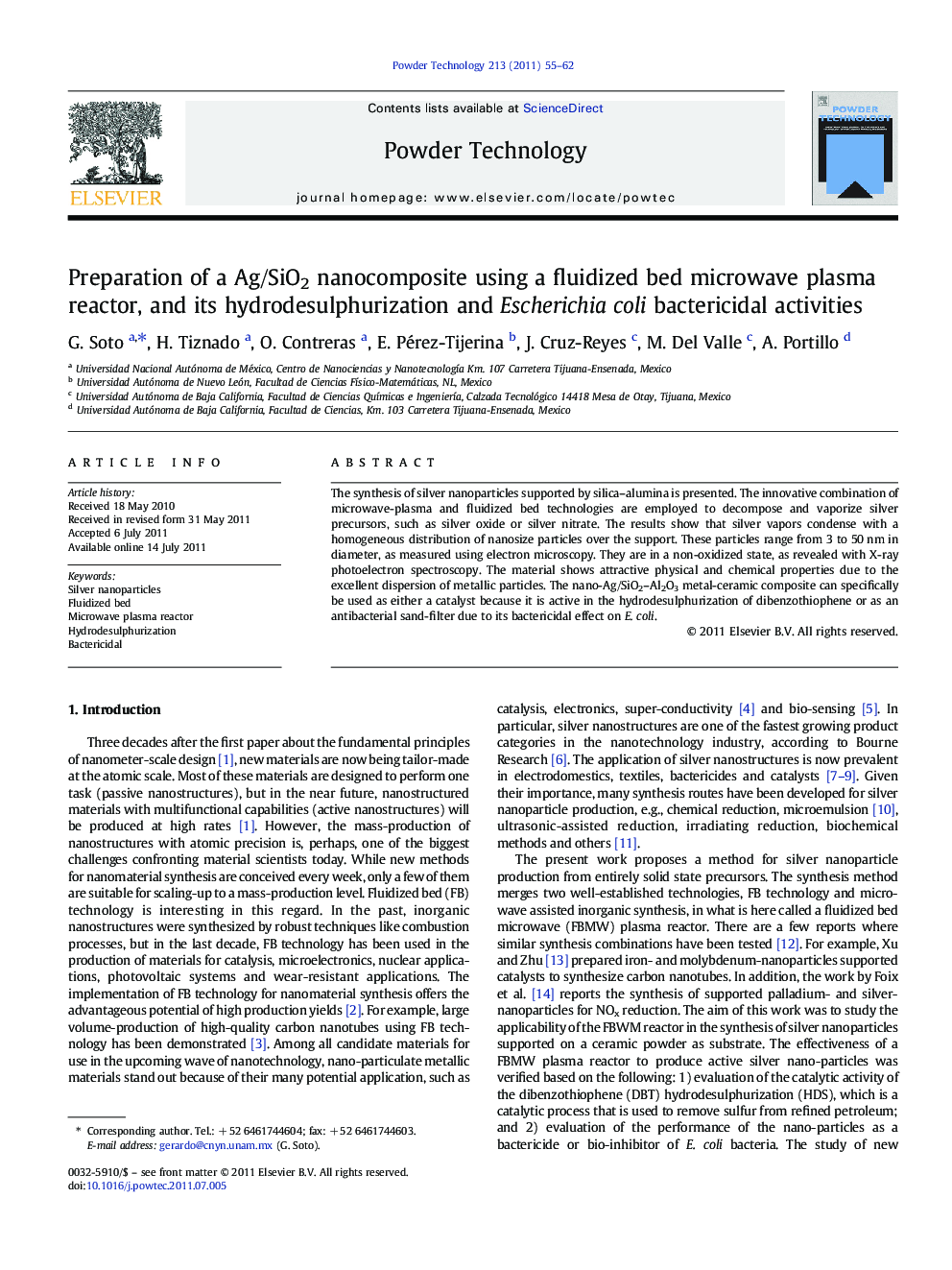| Article ID | Journal | Published Year | Pages | File Type |
|---|---|---|---|---|
| 237457 | Powder Technology | 2011 | 8 Pages |
The synthesis of silver nanoparticles supported by silica–alumina is presented. The innovative combination of microwave-plasma and fluidized bed technologies are employed to decompose and vaporize silver precursors, such as silver oxide or silver nitrate. The results show that silver vapors condense with a homogeneous distribution of nanosize particles over the support. These particles range from 3 to 50 nm in diameter, as measured using electron microscopy. They are in a non-oxidized state, as revealed with X-ray photoelectron spectroscopy. The material shows attractive physical and chemical properties due to the excellent dispersion of metallic particles. The nano-Ag/SiO2–Al2O3 metal-ceramic composite can specifically be used as either a catalyst because it is active in the hydrodesulphurization of dibenzothiophene or as an antibacterial sand-filter due to its bactericidal effect on E. coli.
Graphical abstractFigure optionsDownload full-size imageDownload as PowerPoint slideHighlights► We implemented a new method to produce supported metallic nanoparticles. ► The method is the merge of microwave-plasma and fluidized-bed technologies. ► The method was used to produce silver nanoparticles on silica–alumina substrate. ► The composite material shows activity in hydrodesulphurization of dibenzothiophene. ► The material is a promising bioinhibitor for E. coli.
